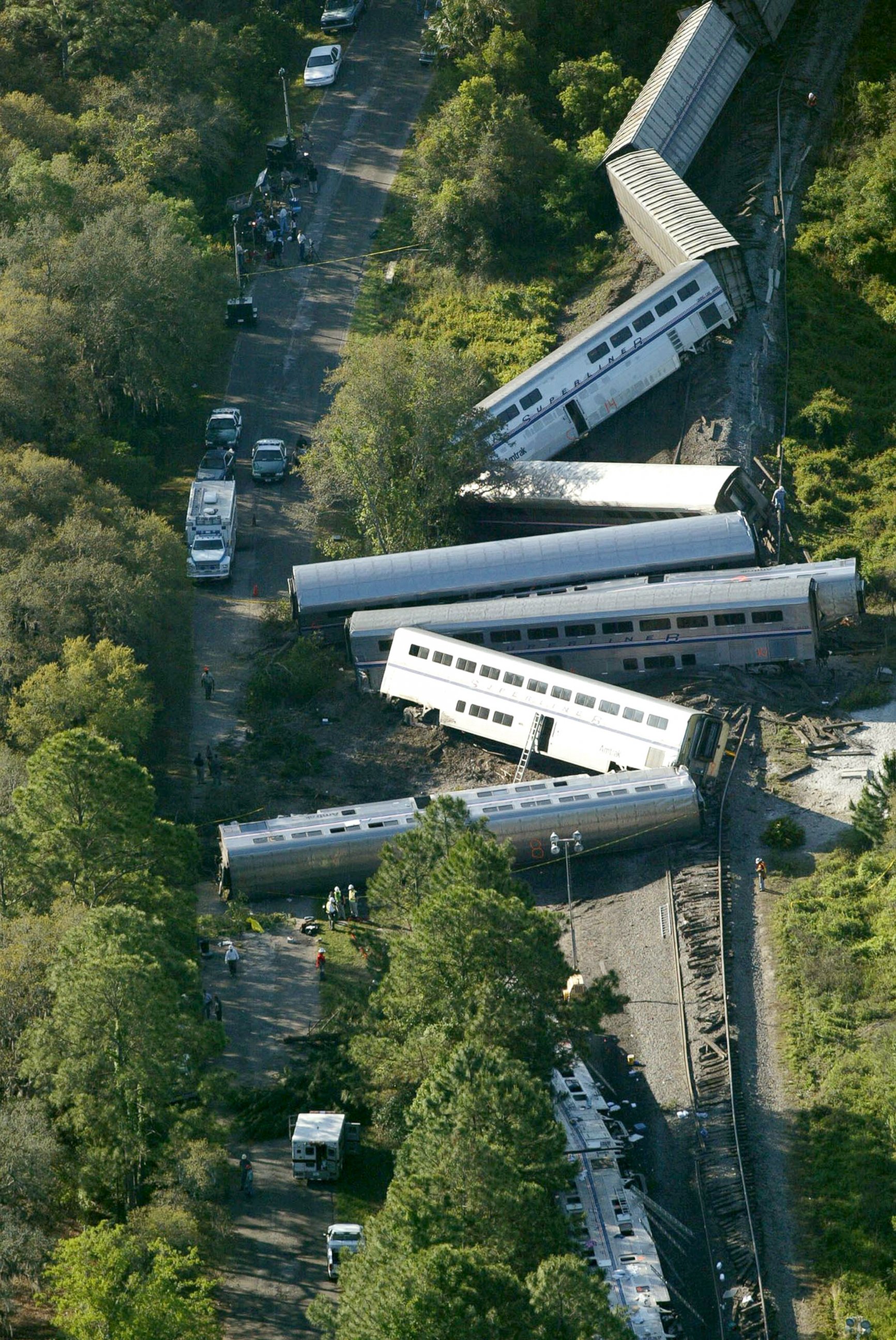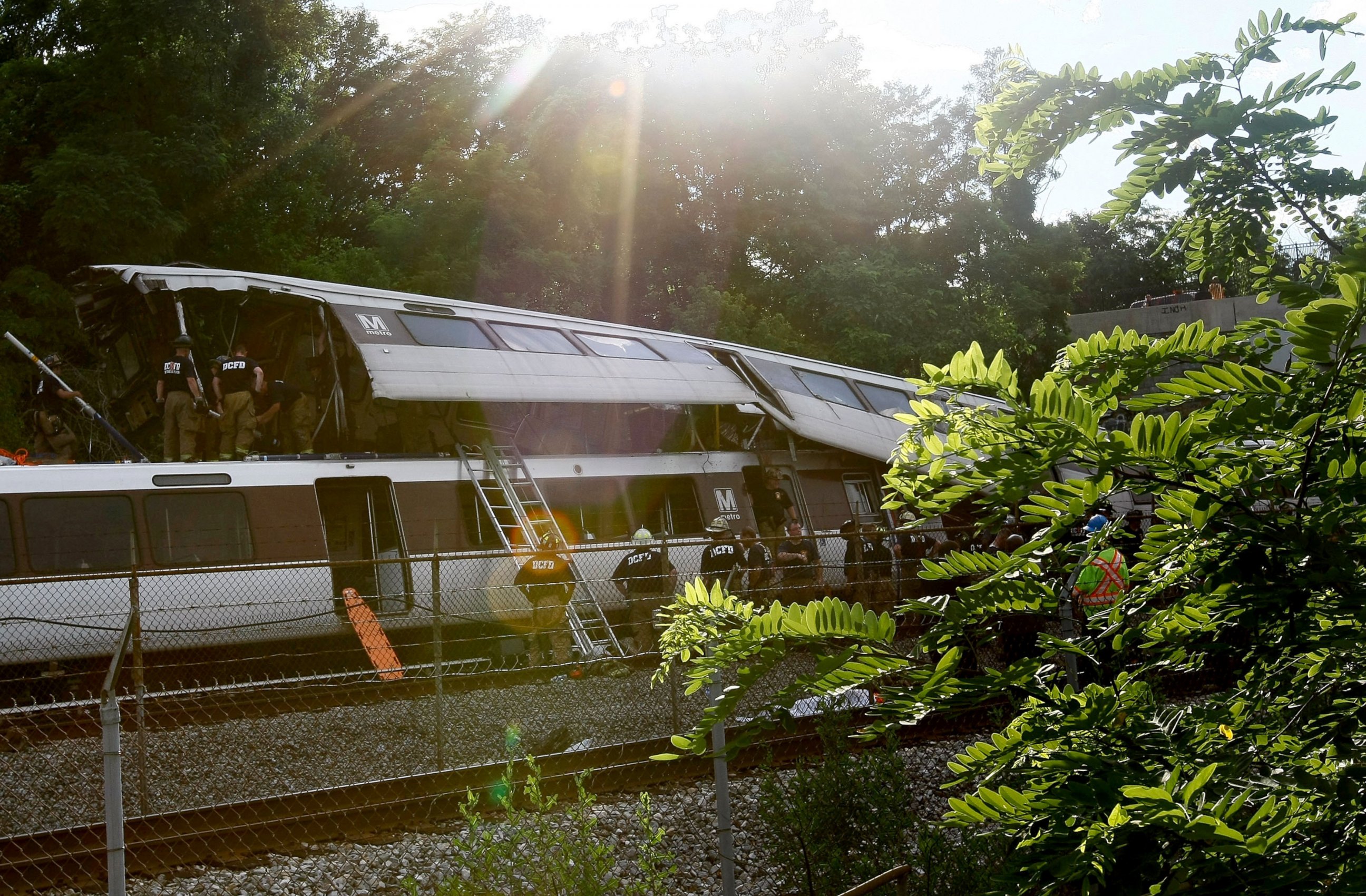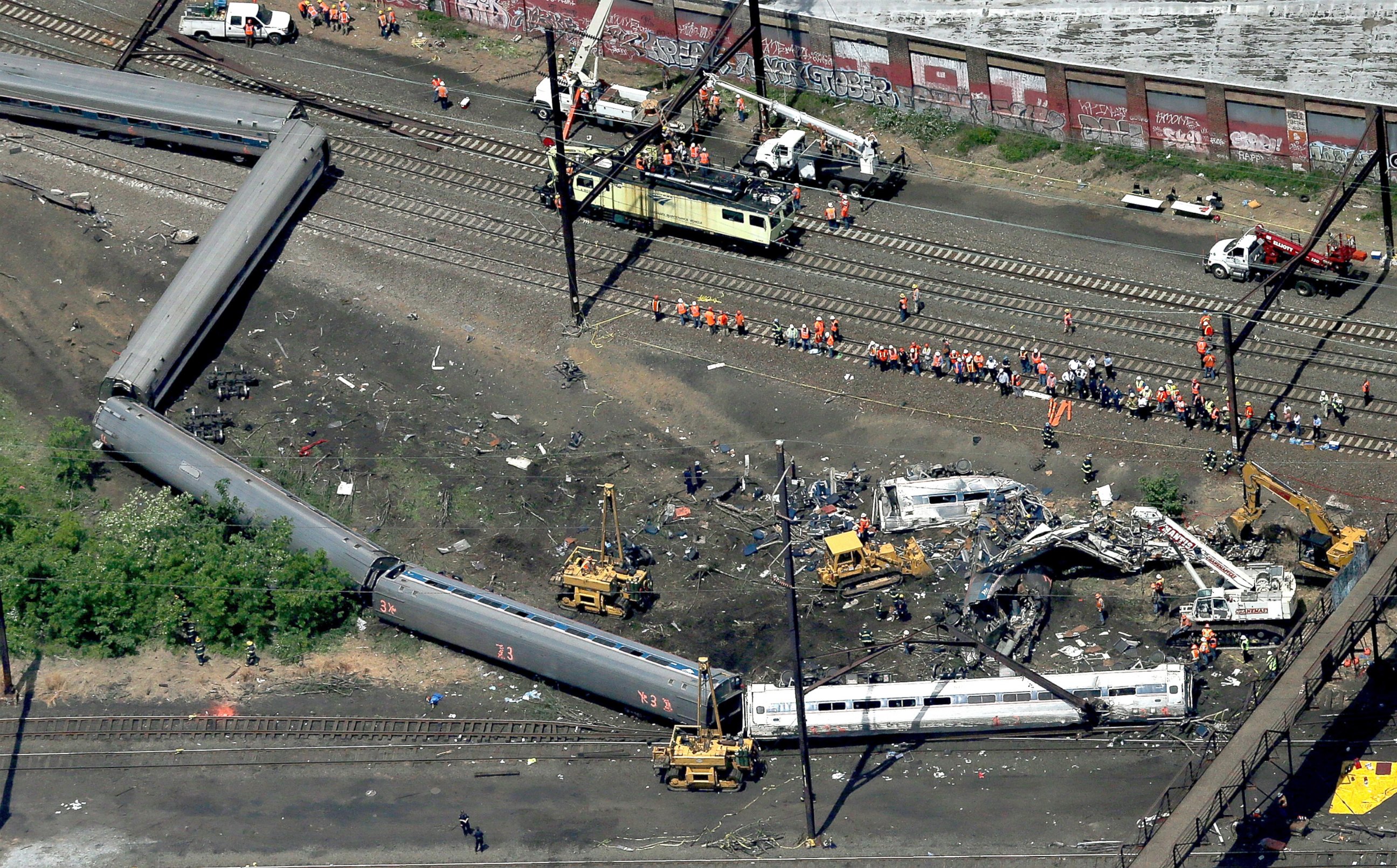Timeline of Major Train Crashes in the US Since 2000
ABC News took a look at the major train crashes since 2000.
— -- Today's NJ Transit train crash in Hoboken, New Jersey, that killed one woman and injured 108 others has become the latest deadly episode in our nation's rail system.
The following list highlights some of the major train crashes in the United States from 2000 until now.
March 17, 2001With 241 passengers and 16 crew members on board, Amtrak train #5-17 derailed near Nodaway, Iowa. Nearly 80 people were injured and one person died. The train was traveling what is known as the "California Zephyr" route, which runs between Chicago and San Francisco. The National Transportation Safety Board (NTSB) reported that the probable cause "was the failure of the rail beneath the train, due to undetected internal defects."
April 18, 2002Traveling from Sanford, Florida, to Lorton, Virginia, and carrying 413 passengers and 33 crew members, Amtrak Auto Train #P052-18 derailed around 5:08 p.m. near Crescent City, Florida. At the time of the derailment, the train was traveling on a CSX track. (CSX is a freight train company.) The train was traveling around a left-hand curve at 56 mph when it derailed, sending 21 of its 40 rail cars off the tracks and resulting in four fatalities, 36 serious injuries and 106 minor injuries. The NTSB concluded that the derailment likely occurred because of a "heat induced track buckle that developed because of inadequate CSX Transportation track-surfacing operations, including misalignment of the curve, insufficient track restraint, and failure to reestablish an appropriate neutral rail temperature."

April 23, 2002Around 8:10 a.m. PT, a freight train collided head-on with a standing Southern California Regional Rail Authority passenger train. Two people died and 162 people were transferred to local hospital as a result of the collision. The NTSB reported that the probable cause for the crash was due to "the freight train crew's inattentiveness to the signal system and their failure to observe, recognize, and act on the approach signal." Additionally, the NTSB said positive train control (PTC) could have prevented the crash.
July 29, 2002Amtrak train 30, traveling from Chicago to Washington, D.C., derailed around Kensington, Maryland, and seriously injuring 14 passengers and two crew members; 71 passengers and eight Amtrak employees were reported to have minor injuries. According to the NTSB, the accident happened four days after track work occurred at the same location. The NTSB said the track crew completing the work may have failed to adequately pack down the track's ballast, which likely led to the train's derailment.

Jan. 26, 2005Eleven people died and more than 100 people were injured after a Metrolink commuter train struck an SUV parked on the tracks in Glendale, Calforonia. After hitting the SUV, the Metrolink train derailed, where it then hit a "standing freight train, buckle[d] laterally outward, and rake[d] the side of a northbound commuter train," according to a report by the Department of Transportation.
Sept. 12, 2008California Metrolink train 111 crashed head-on with a Union Pacific Railroad Freight train around 4:22 p.m. PT, resulting in 25 fatalities. More than 100 passengers were transported to area hospitals. According to the NTSB, "The force of the collision caused the locomotive of train 111 to telescope into the lead passenger coach by about 52 feet." The NTSB report concluded that the probable cause of the crash was the Metrolink engineer, who was text messaging at the time and failed to see a red signal on the track. The agency also suggested that PTC would have stopped the Metrolink train and prevented the crash.
June 22, 2009Washington Metrorail train #112 struck Metrorail train #214 that was stopped on the tracks in Washington, D.C. The force of the impact caused the rear of train #214 to telescope into the front car of train 112, resulting in nine deaths. More than 50 people were treated at area hospitals. The NTSB concluded multiple probable causes, including, but not limited to, a failure of the track circuit modules. These circuit modules "caused the automatic train control system to lose detection of train 214 (the struck train) and thus transmit speed commands to train 112 (the striking train) up to the point of impact," the report said.

Dec. 1, 2013 During the morning rush hour commute, an entire southbound Metro North passenger train traveling from Poughkeepsie, New York, to Grand Central Terminal in New York City derailed as it was going around a left-hand curve. Despite a maximum speed of 30 mph permitted around the curve, the train was traveling at 82 mph when it derailed. The accident killed four passengers and injured more than 60. One of the probable causes presented by the NTSB included the engineer failing to observe the 30 mph speed limit because he had fallen asleep "due to undiagnosed severe obstructive sleep apnea exacerbated by a recent circadian rhythm shift required by his work schedule."
May 12, 2015Carrying nearly 250 passengers and eight crew members, Amtrak train 188 traveling from Washington, D.C., to New York City derailed around 9:21 p.m. in Philadelphia, Pennsylvania. The derailment occurred after the train entered the Frankfurt Junction curve at 106 mph, despite the 50 mph speed restriction for that curve. Eight people were killed and more than 180 people were transported to local hospitals. The Amtrak 188 crash and its substantive investigation culminated in an NTSB report that cited the probable cause was due to "the engineer’s acceleration to 106 mph as he entered a curve with a 50 mph speed restriction, due to his loss of situational awareness likely because his attention was diverted to an emergency situation with another train." The NTSB also said in its report that a lack of PTC on this section of the track likely contributed to the accident.





